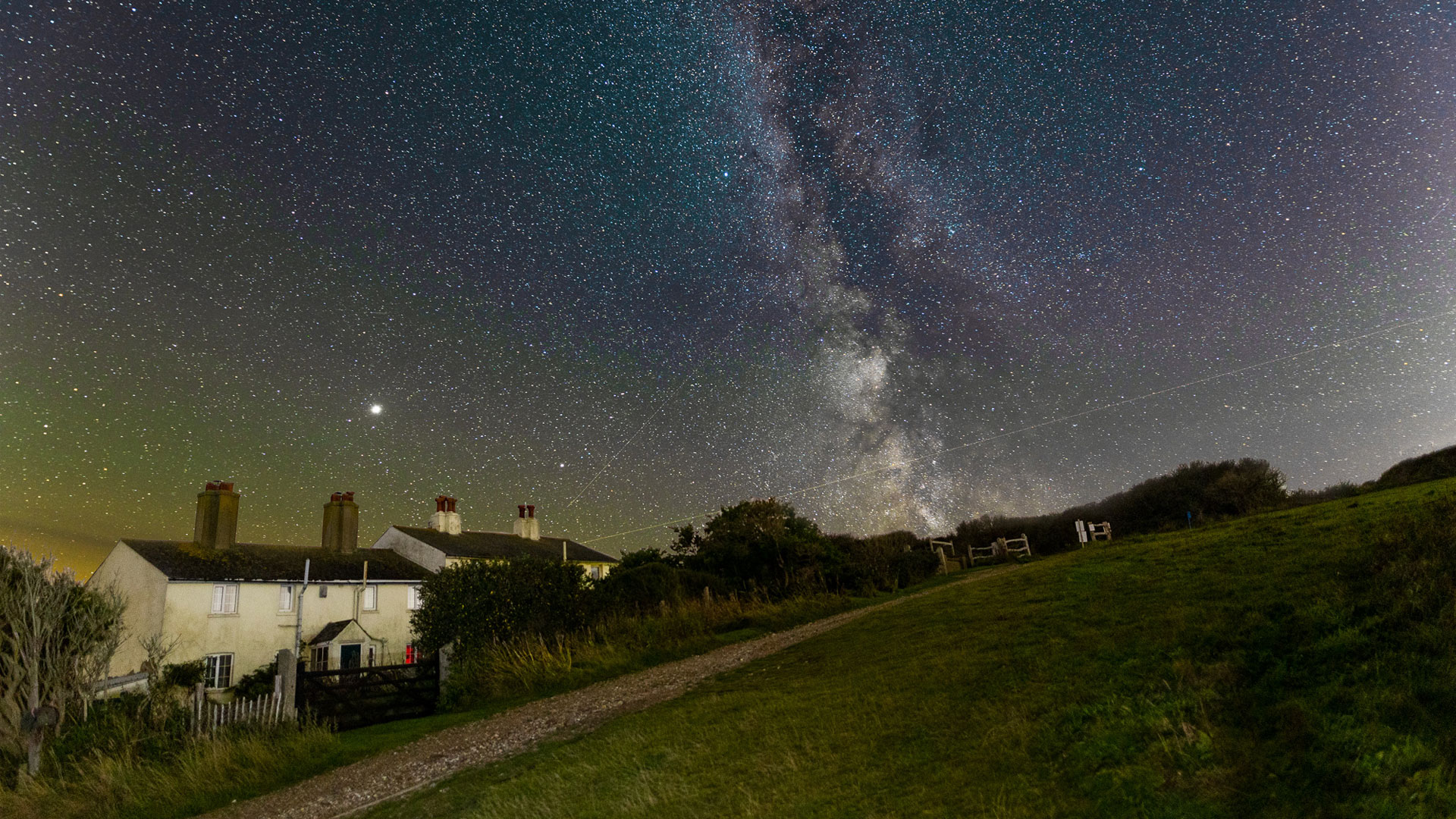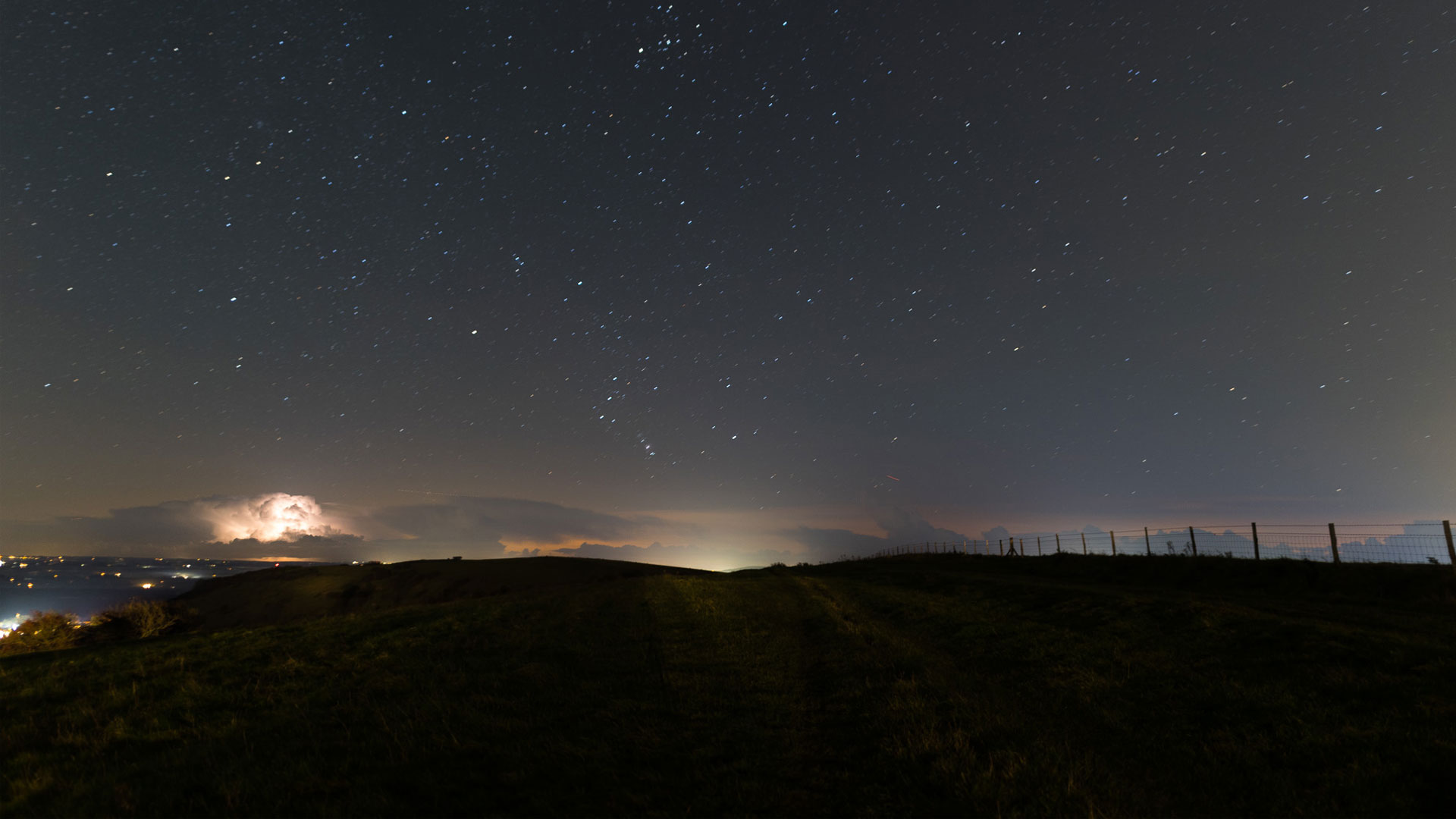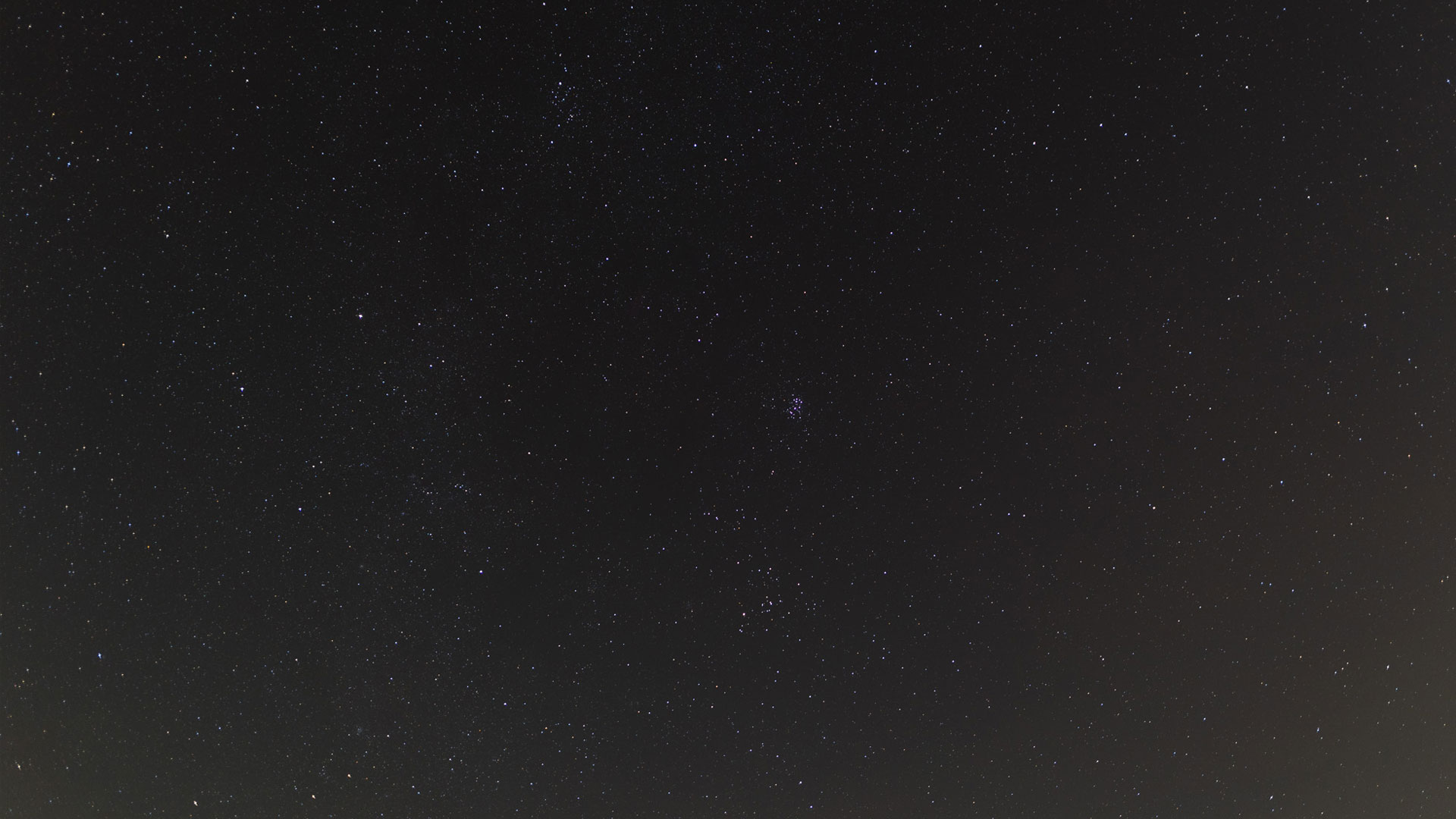Sigma 20mm 14 Art Review Sigma 20mm 14 Art Filter
Our Verdict
The Sigma 20mm F1.iv DG HSM ART lens is dear of astrophotographers all over the world – and for once the hype is justified. A superb option for wide-field astrophotography.
For
- Very calorie-free
- Fast maximum aperture
- Affordable
Confronting
- Cheaper, not-AF drinking glass available
- Focal length is too long for non-tracked images
- No filters
Fast lenses, similar the Sigma 20mm f/1.4 DG HSM ART lens, aren't always inexpensive. And cheap lenses aren't always good. The paradox is that astrophotography can be a spendy game – it's not only the camera equipment you need, information technology's the star tracking accoutrements equally well, which means every penny counts when it comes to lenses.
Central Specs:
Type: 20mm prime lens for full-frame and APS-C sensor cameras.
Compatibility: Available mounts: Canon EF, Nikon F-mount, Sony E-mountain, Sigma SA-mount.
Focal range: 20mm fixed focal length.
Aperture range: f/2.8-f/16 constant.
Thread size: No filter thread.
Weight: 1kg
Problem is, a cheap lens is going to tell when it comes to star photography, wide-field or otherwise. Distortion, comatic abnormality, royal fringing – if you penny-pinch on eyes you could exist setting yourself up for long-term disappointment.
Into the fray launches the Sigma 20mm f/1.4 DG HSM ART lens. At a little under $899 (£800) it's not the cheapest of the inexpensive, simply nor is information technology the Sigma 14mm f/i.eight DG HSM Fine art. It'south a great focal length for astrophotography, and that tempting, huge aperture means information technology absolutely drinks in low-cal, giving you enough of options when it comes to how you prepare your exposures. But is it any good?
Sigma 20mm f/1.4 DG HSM Fine art lens review: Design
- 1kg weight
- Autofocus
- No filter thread
We're big fans of Sigma's ART range of lenses (encounter our 14mm f/1.eight and 12-24mm f/2.8 reviews to come across us in full fanboy menses), and part of that is the build quality of the lenses. Here, Sigma'due south experience edifice pro-class lens is fully evidenced: quality materials and slap-up-feeling construction make it immediately obvious where your money has gone versus the cheaper end of the astrophotography calibration.
The glass is arranged in 11 groups, with fifteen elements in total. Some are FLD ('F' Low Dispersion) drinking glass, and some are SLD ('Special' Depression Dispersion) in the name of chromatic aberration control, while Sigma claims its Super Multi-Layer Blanket keeps flare and ghosting in check.
That 20mm focal length is a convenient one, and because it's non at the super-broad end of things information technology ways this lens has applied applications beyond astrophotography; because of its brilliant maximum discontinuity and autofocus (more on which in a moment) it's well suited to commercial photographic jobs such equally events, christenings, interior photography and more than.
There'southward no image stabilization, which won't worry most astrophotographers, and contributes to the lens' low weight. It really varies ever and then slightly depending on which version of the lens you buy – the Sigma SA-mount version weighs 950g; the Fifty-mountain version 1.035kg. That depression weight does come at a slight cost, which is that the pro-form weather condition sealing on some of Sigma'south other ART-series lenses is missing here. Given that astrophotography tends to be a fair-atmospheric condition action virtually readers hither won't listen, but it's worth remembering if you're buying this lens for more general adventuring.

The discontinuity is, by any standards, a big 'un. At f/i.4 it gives you a wide array of options when information technology comes to exposures. Nine aperture blades make for comfortable-looking bokeh, although defocused areas of the frame are generally a bottom business concern for astro types. Nonetheless, it's two stops faster than an f/2.viii lens, then working backwards that means if y'all're shooting 30 seconds at ISO 3200 on an f/two.8 lens, y'all can use the 20mm f/1.four and reduce the ISO to 800 without changing the overall exposure of the image. Nosotros're non maxim the 20mm Fine art was designed with astrophotography specifically in listen, just information technology certainly ticks a lot of boxes.
One area where it ticks fewer boxes – none, in fact – is for photographers who want to employ it with filters. This chiefly applies to mural snappers, although well-equipped astro types with low-cal pollution filters and then on will too accept interest. Equally with some of its other ultra-wide, ultra-vivid lenses, the design here doesn't allow for a traditional threaded filter ring, so if y'all want to use a filter, you'll need to purchase a third-party adapter. The 20mm f/1.iv is fairly pop with the cinematic community, so there are a few of these about – information technology's worth checking in that location's something that meets your needs, though.
A final consideration is focal length – 20mm is plenty wide, but wider lenses are out in that location, and fans of the 500-dominion will know these can make a big departure to shutter speeds, with knock-on effects for ISO settings. At 20mm, for example, the 500 rule allows an exposure up to 25 seconds without trailing stars; at 14mm you get an extra 10 seconds. Listen you, nosotros tried our review sample on the MoveShootMove star tracker and got some glorious results.
Sigma 20mm f/1.four DG HSM Art lens: Performance
- Well-controlled chromatic aberration
- Geometric images, fifty-fifty at broad-angles
- Sharp from corner to corner
At some point Sigma will produce a stinker in its Art lens range, at which point we'll exist able to stop writing things similar, 'we were expecting great things' but today's not the mean solar day, because the 20mm f/1.4 is emphatically not a stinker.
Ultra-big discontinuity lenses occasionally throw upwardly problems when you use them at their widest aperture, and while the 20mm f/i.4 isn't at its absolute best when it'south positively drinking in light, it's nevertheless very, very good. It's extremely sharp at the centre of the image – comparable, nosotros'd say, to some far more expensive lenses including some of Canon'south superlative RF-mount L-series glass – and although there's a footling flake of softness creeping in effectually the periphery of the image, you take to crop fairly aggressively to see information technology. To which a pragmatist would say, simply frame upwardly your subject in the middle of the frame and you lot won't have to worry about it.

Coma? There's a bit, with stars beginning to look a little elongated relatively close to the centre of the frame. Luckily, with such a broad range of discontinuity values available, if you don't like how the lens handles pinpricks of light you tin can always terminate down without ruining your frame.

Y'all shouldn't forget that there are a number of reasonable quality, autofocus-gratis lenses out there, such as the Samyang 20mm f/1.viii ED AS IF UMC, and while in that location are a few differences in terms of quality – areas in which the Sigma is superior – the question of autofocus is worth bringing up, as most wide-angle lenses will find themselves deployed to non-astrophotography destinations at some point. The lens uses Sigma's Hyper Sonic, which runs swiftly and silently. In that location are snappier-feeling lenses out there, but in use it'southward not too frustrating and definitely falls into the 'prissy to have' category.
Should y'all buy the Sigma 20mm f/ane.4 DG HSM ART lens?
The positives pile up pretty rapidly once you outset to list the pros and cons of this excellent piffling piece of astrophotography kit. It can weigh nether 1kg, which is nifty for those times when the perfect viewpoint is some fashion over the horizon and y'all're already lugging a tripod, a star tracker, a Thermos full of java and all the accoutrements of a night nether the stars. That such a light lens is able to produce such high-quality images is a testament to the design impresarios at Sigma.

It's non the only impressive thing well-nigh this lens. The build quality is convincing, and while it might be weather-sealed, there's zippo virtually its construction that makes us think it needs to be handled with kid gloves.
More than anything, it shoots bang-up images. Compared to the manual-focus-only crowd at the lower end of the market this is super sharp and super vivid, and that ways easier astrophotography and lower ISOs, which inevitably means technically superior images. This is a much-loved astrophotography lens for a reason.
If this product isn't for you
Tin can't bring yourself to spend the money? We've got you. Consider lenses such as the Rokinon 20mm f/one.8 AS ED UMC, which doesn't have autofocus, but astrophotographers won't mind. Alternatively, in that location are lenses out at that place that practise abroad with the restrictions of prime focal lengths – consider Sigma's own Sigma 14-24mm F2.eight DG HSM Art, or Nikon'due south Nikkor 14-24mm F/two.8 G. Canon fans could opt for the RF 15-35mm f/ii.8L IS USM – a significantly more than practical focal length for all-purpose photography, admitting at the price of a bit of aperture and quite a lot of money – Canon's electric current wide-angle fast lens volition set up you back a bit over $2300 (£2,000).
Bring together our Space Forums to proceed talking space on the latest missions, night sky and more! And if you have a news tip, correction or comment, let us know at: community@space.com.
Source: https://www.space.com/sigma-20mm-f14-dg-hsm-art-lens-review
0 Response to "Sigma 20mm 14 Art Review Sigma 20mm 14 Art Filter"
Post a Comment